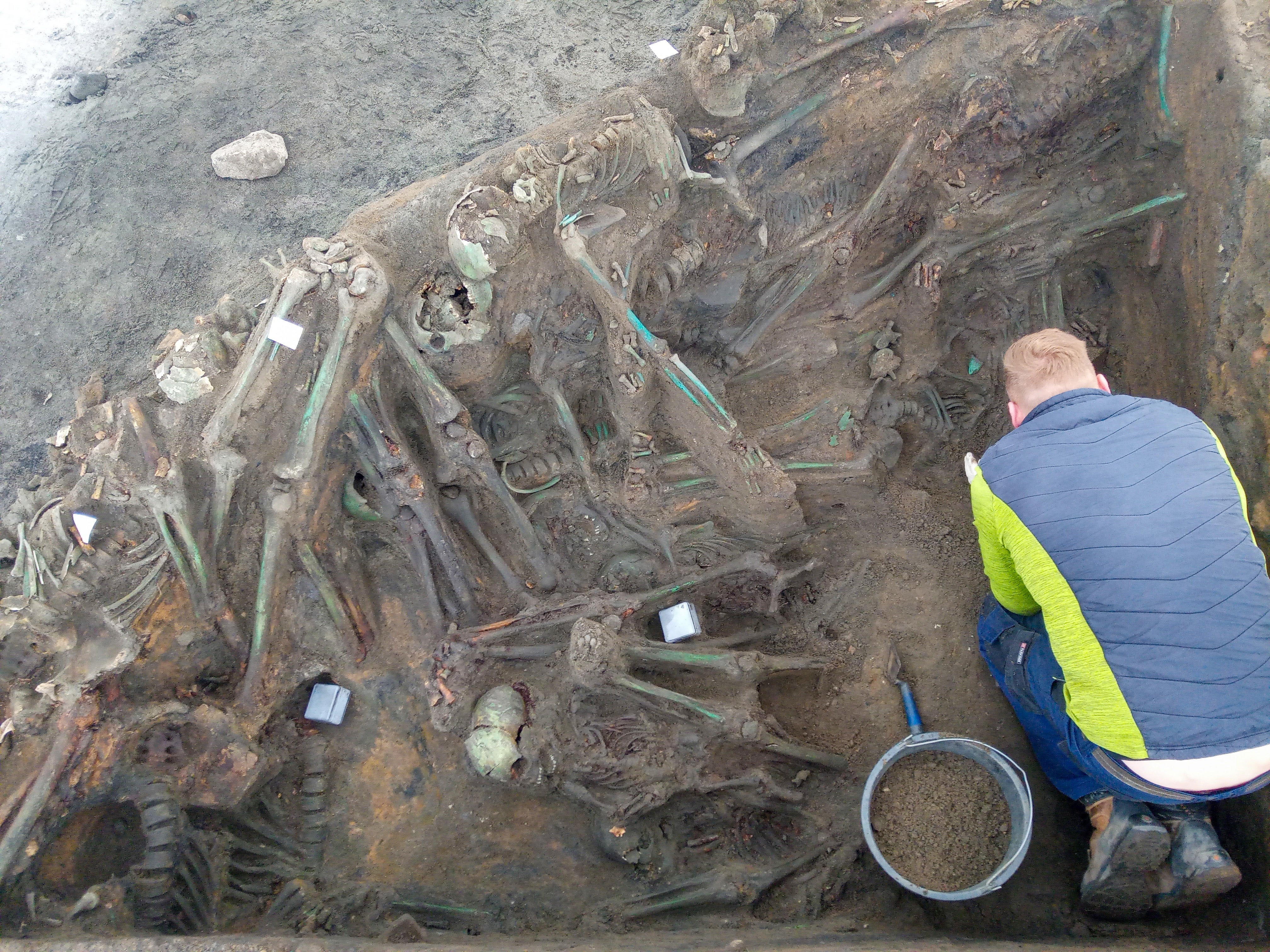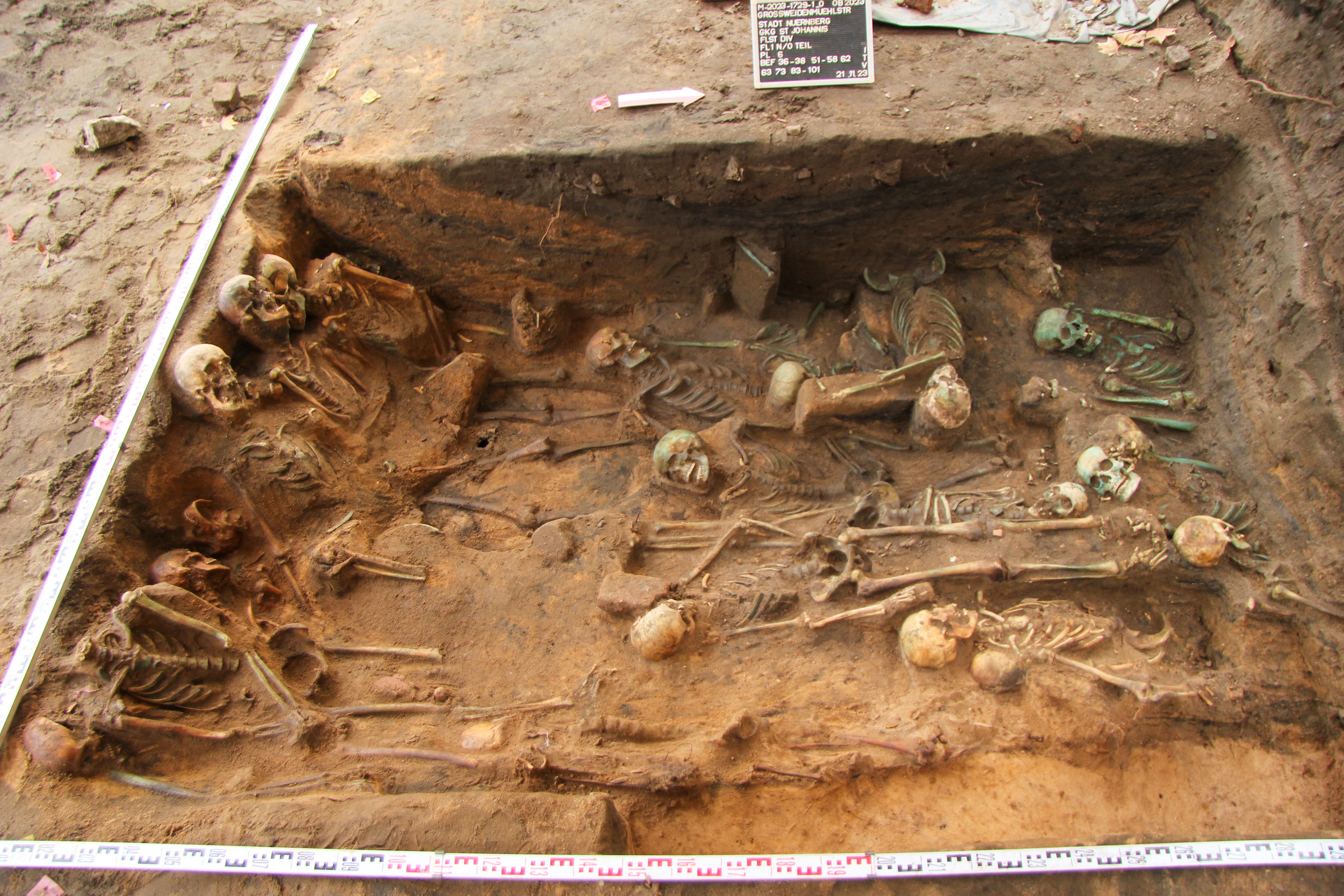Mass grave of plague victims discovered in Germany could be Europe’s largest ever
In one pit, number of excavated bodies reach nearly 300
Your support helps us to tell the story
From reproductive rights to climate change to Big Tech, The Independent is on the ground when the story is developing. Whether it's investigating the financials of Elon Musk's pro-Trump PAC or producing our latest documentary, 'The A Word', which shines a light on the American women fighting for reproductive rights, we know how important it is to parse out the facts from the messaging.
At such a critical moment in US history, we need reporters on the ground. Your donation allows us to keep sending journalists to speak to both sides of the story.
The Independent is trusted by Americans across the entire political spectrum. And unlike many other quality news outlets, we choose not to lock Americans out of our reporting and analysis with paywalls. We believe quality journalism should be available to everyone, paid for by those who can afford it.
Your support makes all the difference.Archaeologists have unearthed the skeletons of about 1,000 Black Death victims in southern Germany in what could be the largest mass grave of its kind in all of Europe.
Excavations in Nuremberg ahead of the construction of new apartments in the city found eight pits each crammed with hundreds of skeletons of adults, children, and babies dating to between the late 15th and early 17th centuries.
So far, three of the pits have been fully excavated while another four are expected to be examined in the coming weeks, archaeological excavation company In Terra Verita said in a statement.
“A discovery like that has never happened before and quite honestly no one had thought this to be possible. The site is of enormous importance to the city of Nuremberg and we work together in our attempt to get all information possible,” Melanie Langbein from the city’s department for heritage conservation said.
In two of the mass graves, the dead were tightly packed with the skeletons of the adult persons in a sitting position along the Southern end of the pit.

About nine more people stacked up in a sitting position on top of these skeletons, the excavation company noted.
The corpses of children and babies were squeezed into the pits between the “sitters” in what seems like an attempt to fill up every available space.
In one of these pits, the number of excavated bodies reached nearly 300.
But signs of exhumation done after the burials of an unknown number of bodies suggest we may not know for sure exactly how many people were originally buried there.

In the pits exhumed so far, almost 1,000 bodies have been found, documented, and taken for further examination, and the number is expected to rise to about 1,500 bodies, according to the archaeological excavation company.
“The skeletons are in very good shape for examination, despite the destruction that occurred,” anthropologist Florian Melzer said.
“We can now detail out all information that is kept in those bones, eg the prevalence of different kinds of cancer, genetic mutations that show in skulls, age and sex determination, status of the teeth and conclusions from that to the general health and life circumstances in this period,” he added.

Black Death killed hundreds of thousands of people in Europe in dozens of waves between the 14th and 18th centuries.
Previous research suggests people in the Nuremberg region suffered through three major and several smaller outbreaks between the 16th and 17th centuries that led to over 5,000 deaths in 1533, about 10,000 in 1563, and nearly 15,000 in 1634.
“As far as we know the site is the biggest scientifically excavated mass burial in Germany, and with the estimated number of bodies possibly the biggest in Europe,” Terra Verita said.

Join our commenting forum
Join thought-provoking conversations, follow other Independent readers and see their replies
Comments